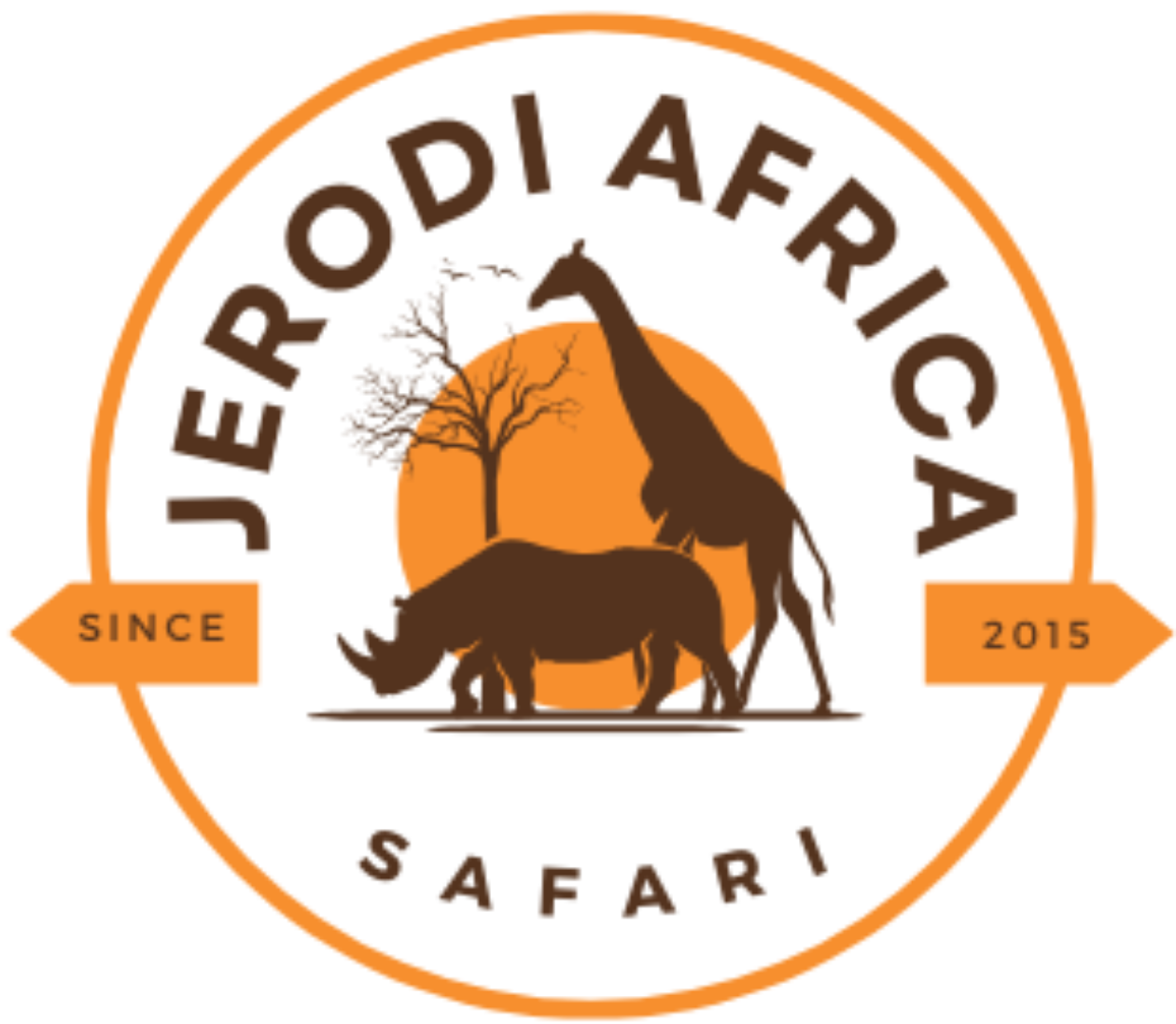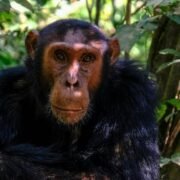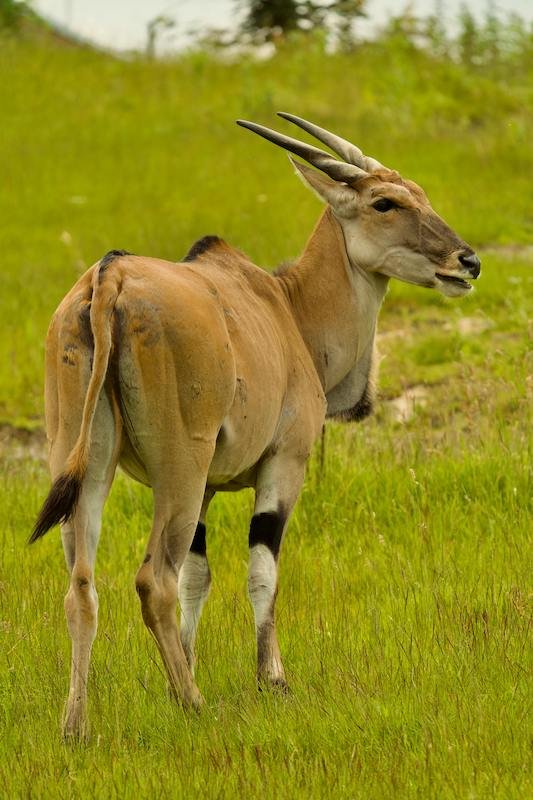
Antelopes in Uganda – Species, Traits, and Where to See Them
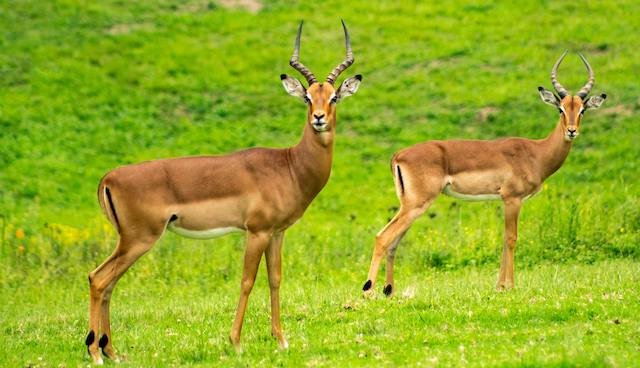
Antelopes in Uganda are a vital part of the country’s rich biodiversity, thriving across national parks and protected savannahs. These graceful animals represent some of the most captivating wildlife you can encounter on a Uganda safari. With over 29 antelope species found across Uganda, their variety, beauty, and ecological roles make them fascinating subjects for wildlife lovers and photographers alike.
In this guide, we explore the different antelope species in Uganda, their physical characteristics, breeding seasons, gestation, population, common predators, and the national parks where you can spot them. Additionally, we provide practical safari tips and explain why antelopes play a crucial role in Uganda’s ecosystem.
Types of Antelopes in Uganda
Uganda boasts one of the most diverse antelope populations in Africa. Therefore, it’s no surprise that safari-goers encounter them in nearly every national park. Below are some of the most common and iconic species found in the country’s wilderness:
1. Uganda Kob (Kobus kob thomasi)
This golden-brown antelope is Uganda’s national animal and is prominently featured on the country’s coat of arms. Male kobs have impressive ridged horns and are often seen in open plains and wetlands.
- Breeding Season: Year-round, but peaks during the rainy seasons.
- Gestation Period: Approximately 8 months.
- Habitat: Queen Elizabeth and Murchison Falls National Parks.
- Population: Tens of thousands.
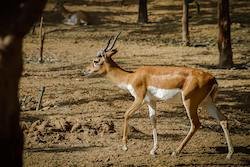
2. Bushbuck (Tragelaphus scriptus)
A solitary and shy antelope, bushbucks are medium-sized and found in dense forests and woodland edges. In contrast to kobs, bushbucks are less social and more elusive.
- Color: Ranges from reddish-brown to dark brown, with white spots and stripes.
- Gestation: About 6 months.
- Common Location: Kibale Forest and Lake Mburo National Park.
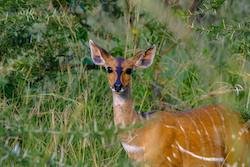
3. Defassa Waterbuck (Kobus ellipsiprymnus defassa)
Larger than many species, waterbucks have a robust build and a shaggy coat with a distinctive white ring on the rump.
- Breeding: Throughout the year.
- Gestation: Roughly 8 months.
- Predators: Lions, leopards, hyenas.
- Best Seen In: Murchison Falls and Lake Mburo National Parks.
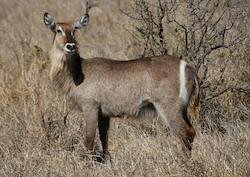
4. Impala (Aepyceros melampus)
Impalas are elegant, medium-sized antelopes known for their agility and group behavior. Unlike bushbucks, impalas are more sociable and move in herds.
- Breeding: Seasonal, often in the dry season.
- Social Behavior: Live in herds of 20–100.
- Spotted in: Lake Mburo National Park.
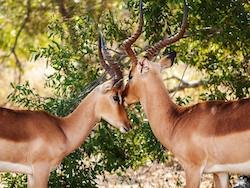
5. Eland (Taurotragus oryx)
Africa’s largest antelope, elands are surprisingly shy for their size. Males can weigh over 900 kg. Despite their bulk, they are quite agile.
- Gestation: About 9 months.
- Population: Smaller in Uganda, mostly due to poaching in unprotected areas.
- Location: Pian Upe and Kidepo Valley.

6. Oribi (Ourebia ourebi)
These small, alert antelopes are easy to miss, but they are quite widespread. Nevertheless, with a trained guide, spotting them becomes easier.
- Lifespan: 10–12 years.
- Breeding: Seasonal, with a short gestation of 6 months.
- Found in: Murchison Falls and Kidepo Valley.
Breeding Season and Gestation of Antelopes
Generally, Uganda’s antelopes breed either year-round or in sync with the rainy season, when vegetation is abundant. This timing ensures that calves are born when food is plentiful. Larger species like elands and waterbucks gestate for 8–9 months, while smaller ones like oribis and duikers have a shorter pregnancy period of 5–6 months.
Most antelope species give birth to a single calf. Although twins can occur, they are extremely rare. Additionally, females often isolate themselves to give birth in tall grass, hiding their young from predators during the first few weeks.These traits allow them to adapt to their environments and avoid danger effectively.
Physical Characteristics of Uganda’s Antelopes
Antelopes in Uganda vary widely in size, color, and horn structure. Therefore, identifying them can be a rewarding challenge on a game drive.
- Size Range: From small duikers (weighing ~10 kg) to massive elands (up to 900 kg).
- Horns: Present in males (and some females like waterbucks), often twisted or ridged.
- Coloration: Earth-toned for camouflage—browns, grays, and tans with spots, stripes, or white markings.
In addition, their physical adaptations—such as sharp vision and powerful legs—enhance their ability to evade danger and survive in the wild.
Predators of Antelopes in Uganda
Despite their agility and keen senses, antelopes face numerous predators in the wild. Therefore, survival requires constant vigilance.
- Lions – Primarily target larger antelopes like kobs and waterbucks.
- Leopards – Ambush smaller species such as duikers or bushbucks.
- Hyenas and wild dogs – Hunt in packs and often chase impalas or oribis.
To avoid predators, antelopes rely on keen hearing, herding behavior, and remarkable speed. Moreover, some use camouflage and stillness to escape detection.
Where to Spot Antelopes in Uganda
Uganda’s national parks and reserves are some of the best places in East Africa to view antelopes in the wild. Because of the variety of ecosystems, you can see different species across multiple habitats.
Murchison Falls National Park
Home to Uganda kobs, oribis, bushbucks, Jackson’s hartebeests, and Defassa waterbucks. The northern plains are especially ideal for viewing.
Kidepo Valley National Park
Renowned for elands, oribis, reedbucks, and bush duikers. Moreover, the rugged landscape offers excellent photo opportunities.
Lake Mburo National Park
The only park with impalas. You can also see bushbucks, sitatungas, and elands on guided walking safaris. Additionally, the park’s compact size allows for closer encounters.
Queen Elizabeth National Park
Supports Uganda kob, bushbuck, and waterbuck populations. Look for herds along the Kasenyi plains, particularly during the dry season.
Pian Upe Wildlife Reserve
A lesser-known gem with elands, Jackson’s hartebeests, and roan antelope. For those seeking off-the-beaten-path adventures, this is ideal.
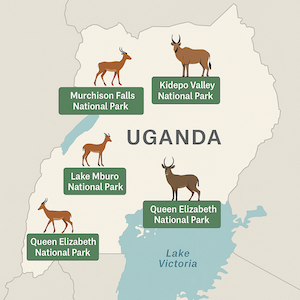
Why Antelopes Matter in Uganda’s Ecosystem
Antelopes play a crucial ecological role in Uganda’s ecosystems. In fact, without them, the balance between predator and prey would collapse.
- Grazers and browsers that help maintain vegetation balance.
- Prey species that support carnivore populations.
- Seed dispersers that aid plant reproduction.
Moreover, antelopes contribute to eco-tourism, photography safaris, and local conservation funding. Consequently, their protection is a national priority.
Tips for Viewing Antelopes on Safari
- Best Time to Visit: Dry seasons (Dec–Feb and June–Aug) offer optimal game viewing.
- Use a Guide: A trained guide increases your chance of spotting rare or elusive species.
- Bring Binoculars: Especially helpful in woodland parks or for small species.
- Book Morning Drives: Wildlife is more active early in the day.
Additionally, consider including at least two national parks in your itinerary to increase the variety of antelope species observed.
To learn more visit Uganda Wildlife Authority and get more details about national park regulations and wildlife monitoring.
Recent Posts
Hartebeest vs Topi in Uganda: Species, Parks & Key Differences
Mountain Gorillas and Chimpanzees in Uganda
Monkeys in Uganda: Species, Parks & Safari Guide
Tags

Thailand

